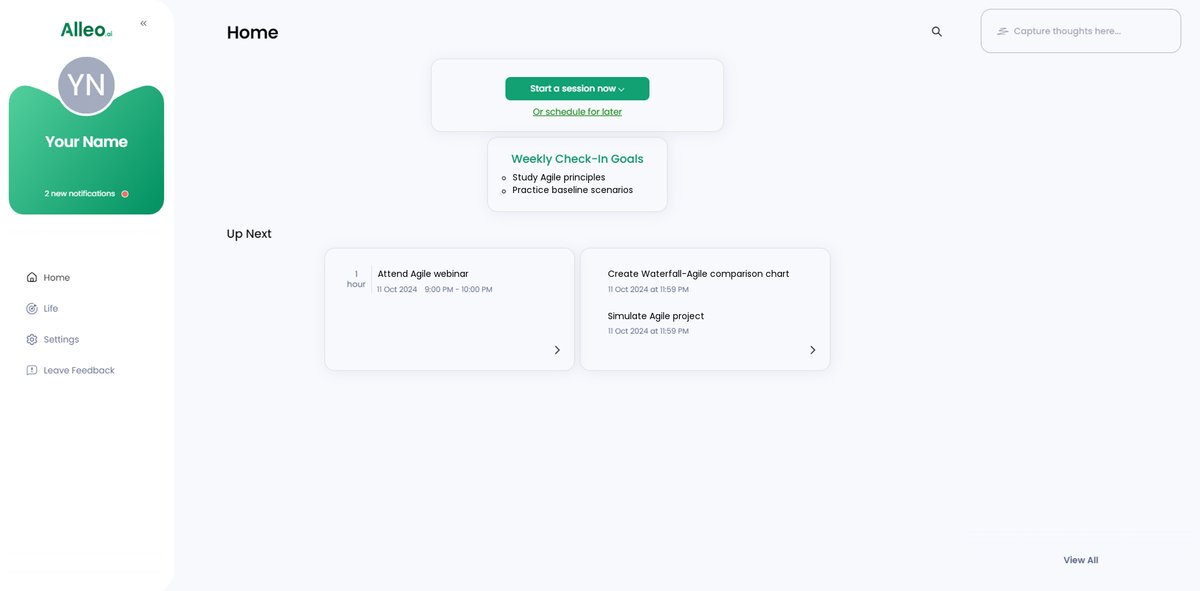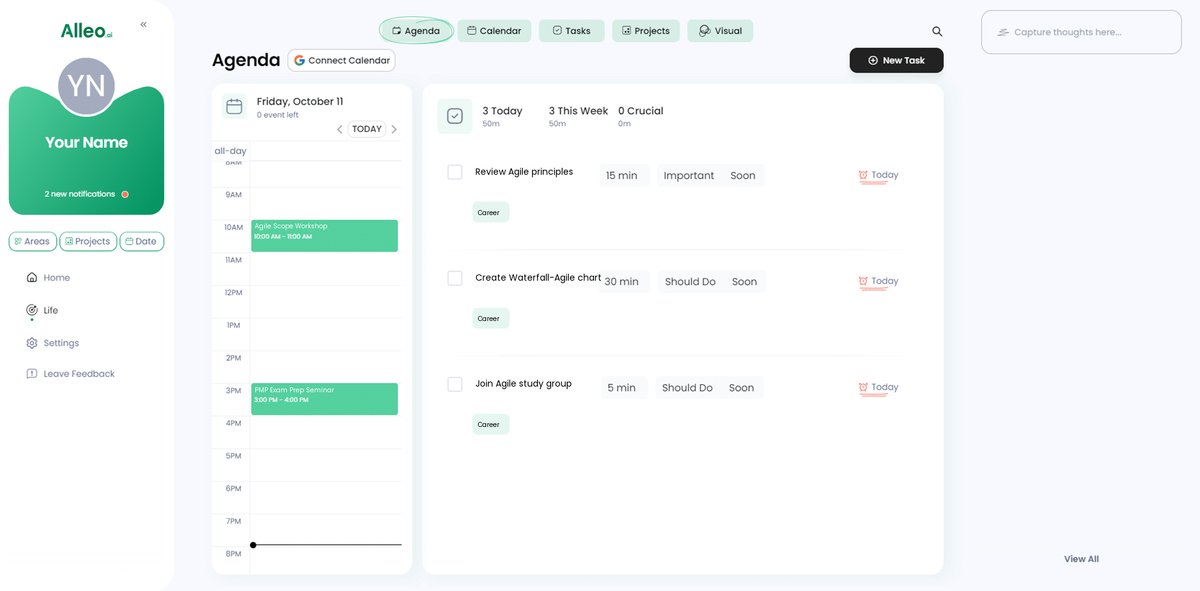4 Essential Ways Project Managers Can Master Agile Scope Management for the PMP Exam
Ever found yourself puzzled by Agile scope management while prepping for the PMP exam? Understanding Agile scope management for PMP certification can be challenging, especially when dealing with concepts like product backlog management and sprint planning.
As a life coach, I’ve helped many professionals navigate these challenges. I often encounter project managers who struggle with understanding Agile scope management concepts, including iterative scope definition and user stories and requirements.
In this article, you’ll discover specific strategies to demystify Agile scope management for the PMP exam. We’ll cover actionable steps, comparisons, and tools to enhance your understanding of Agile project management principles, scope creep in Agile methodologies, and prioritization techniques in Agile.
Let’s dive into the world of Agile scope management PMP and explore how it relates to the Scrum framework and scope management.

Understanding the Challenge of Agile Scope Management for PMP Exam Takers
One significant challenge PMP exam takers face is confusion around Agile scope management. Agile project management principles, with their flexibility, contrast starkly with the rigid structure of traditional project management, leading to misunderstandings about scope creep in Agile methodologies.
Many of my clients initially grapple with questions about why a scope management plan is necessary in Agile projects. This confusion can cause undue stress and impact their exam performance, especially when dealing with product backlog management and sprint planning and scope.
In my experience, people often find that Agile’s iterative scope definition complicates scope management. This adds a layer of difficulty when compared to Waterfall methodologies, particularly when dealing with user stories and requirements.
Feeling overwhelmed by these differences is common. However, with the right strategies, including understanding Agile change control processes and prioritization techniques in Agile, you can overcome these hurdles and excel in your PMP certification and Agile topics, including the Scrum framework and scope management aspects of the PMP exam.

Overcoming this challenge in Agile scope management PMP requires a few key steps. Here are the main areas to focus on to make progress:
- Study Agile principles and iterative cycles: Enroll in courses, read guides on Agile project management principles, and join study groups.
- Practice Agile scope baseline scenarios: Simulate projects using product backlog management, use Agile tools for sprint planning and scope, and engage in peer reviews.
- Compare Waterfall vs. Agile scope management: Develop comparison charts highlighting iterative scope definition, attend webinars on user stories and requirements, and interview experienced managers about Agile change control processes.
- Review PMI Study Hall Agile-related questions: Analyze questions on prioritization techniques in Agile, take practice exams covering PMP certification and Agile topics, and seek feedback from mentors on the Scrum framework and scope management.
Let’s dive in!
1: Study Agile principles and iterative cycles
Understanding Agile principles and iterative cycles is crucial for mastering Agile scope management PMP.
Actionable Steps:
- Enroll in an Agile framework course
- Sign up for a reputable online Agile project management principles course.
- Complete the course and earn a certificate.
- Read the Agile Practice Guide
- Dedicate time daily to read and summarize key points on product backlog management.
- Finish the guide within a month.
- Join Agile study groups
- Participate in online forums and local meetups focusing on sprint planning and scope.
- Attend at least one meetup or forum discussion weekly.
Explanation: These steps help you grasp Agile’s iterative nature, which contrasts with traditional methodologies. By enrolling in courses, studying guides, and joining groups, you build a solid foundation in iterative scope definition and user stories and requirements.
This structured approach aligns with current trends in project management. For further reading on Agile methodologies, check out this resource.
Key benefits of studying Agile principles:
- Enhances adaptability in Agile scope management PMP
- Improves team collaboration skills for managing scope creep in Agile methodologies
- Increases efficiency in handling project changes through Agile change control processes
This foundation will ease the transition to more hands-on Agile practices, including prioritization techniques in Agile and the Scrum framework and scope management.

2: Practice Agile scope baseline scenarios
Practicing Agile scope baseline scenarios is essential to mastering Agile scope management for the PMP exam. Understanding these scenarios helps with product backlog management and iterative scope definition.
Actionable Steps:
- Simulate Agile projects
- Create mock projects and practice setting dynamic scope baselines, focusing on user stories and requirements.
- Complete at least three simulations, incorporating sprint planning and scope considerations.
- Use Agile project management tools
- Familiarize yourself with tools like Jira or Trello to manage scope and implement Agile change control processes.
- Successfully manage a small project using these tools, applying prioritization techniques in Agile.
- Engage in peer reviews
- Partner with a colleague to review each other’s scope management practices, focusing on Agile project management principles.
- Conduct peer reviews for at least two projects, addressing scope creep in Agile methodologies.
Explanation: Practicing these scenarios helps you understand Agile’s dynamic nature and enhances your practical skills in Agile scope management PMP.
Using tools like Jira or Trello aligns with industry trends and prepares you for real-world applications of the Scrum framework and scope management. For more insights on Agile project management, check out this resource.
These steps will build your confidence and proficiency in Agile scope management, aiding your PMP certification and Agile topics success.

3: Compare Waterfall vs. Agile scope management
Comparing Waterfall and Agile scope management PMP is crucial for understanding their differences and applying the right approach during your PMP exam.
Actionable Steps:
- Create comparison charts
- Develop detailed charts comparing Agile scope management PMP and Waterfall methodologies.
- Complete at least two comprehensive charts focusing on product backlog management and sprint planning and scope.
- Attend webinars on scope management
- Register for and attend webinars that focus on comparing different methodologies, including Agile project management principles.
- Attend at least two webinars this month covering iterative scope definition and user stories and requirements.
- Interview experienced project managers
- Conduct interviews with professionals who have experience in both methodologies, discussing Agile change control processes.
- Interview at least three project managers familiar with PMP certification and Agile topics.
Key differences between Waterfall and Agile scope management PMP:
- Flexibility in adapting to changes and managing scope creep in Agile methodologies
- Approach to defining project requirements using the Scrum framework and scope management
- Frequency of deliverables and stakeholder feedback, incorporating prioritization techniques in Agile
Explanation: These steps will deepen your understanding of how scope management varies between Waterfall and Agile scope management PMP. By creating charts, attending webinars, and conducting interviews, you can gain diverse insights.
This approach aligns with the industry trend of integrating Agile into traditional project management practices. For more information, visit this resource.
This knowledge will equip you to handle PMP exam questions with confidence, especially those related to Agile scope management PMP.

4: Review PMI Study Hall Agile-related questions
Reviewing PMI Study Hall Agile-related questions can enhance your understanding of Agile scope management for the PMP exam, focusing on key Agile project management principles.
Actionable Steps:
- Analyze PMI Study Hall questions
- Review and dissect questions related to Agile scope management PMP.
- Aim to analyze at least 50 questions, including topics on product backlog management and sprint planning and scope.
- Take practice exams
- Schedule regular practice exams focusing on Agile topics, including iterative scope definition and user stories and requirements.
- Complete and review three practice exams.
- Seek feedback from mentors
- Share your practice exam results with a mentor for feedback on Agile scope management PMP concepts.
- Obtain actionable feedback from at least two mentors, discussing Agile change control processes and prioritization techniques in Agile.
Explanation: These steps are crucial for mastering Agile scope management PMP by familiarizing yourself with PMI’s exam format and the Scrum framework and scope management.
Analyzing questions and taking practice exams helps you identify patterns and areas needing improvement in Agile scope management. Seeking feedback ensures you refine your approach to handling scope creep in Agile methodologies.
For further insights, visit this resource.
Strategies to improve your PMI Study Hall performance on Agile scope management PMP:
- Time yourself to simulate exam conditions
- Focus on understanding question patterns related to PMP certification and Agile topics
- Review incorrect answers thoroughly, especially those concerning Agile project management principles
These strategies will boost your confidence and preparedness for the exam, particularly in Agile scope management PMP.

Partner with Alleo on Your PMP Exam Journey
We’ve explored the challenges of mastering Agile scope management for the PMP exam. Solving them can benefit your career, especially in understanding Agile project management principles.
Did you know you can work with Alleo to make this journey easier and faster, particularly when it comes to Agile scope management PMP topics?
Setting up an account with Alleo is simple. Start by creating a personalized plan tailored to your needs, including focus areas like product backlog management and sprint planning and scope.
Alleo’s AI coach provides affordable coaching support specific to Agile scope management. You’ll get full coaching sessions, just like with a human coach, covering aspects such as iterative scope definition and user stories and requirements.
The coach will follow up on your progress. It will handle changes and keep you accountable with text and push notifications, helping you understand Agile change control processes.
You’ll stay on track and adjust your study plan as needed, mastering prioritization techniques in Agile and other key PMP certification and Agile topics.
Ready to get started for free? Let me show you how to begin your journey in Agile scope management PMP preparation!
Step 1: Log In or Create Your Account
To begin mastering Agile scope management for your PMP exam, log in to your existing Alleo account or create a new one to access personalized AI coaching support.

Step 2: Choose Your Focus Area
Select “Setting and achieving personal or professional goals” to align your PMP exam preparation with your broader career aspirations, helping you stay motivated and focused on mastering Agile scope management concepts.

Step 3: Selecting the life area you want to focus on
Choose “Career” as your focus area to directly address your PMP exam preparation and Agile scope management challenges, aligning your coaching journey with your professional goals.

Step 4: Starting a coaching session
Begin your journey with an intake session to set up your personalized plan for mastering Agile scope management, allowing the AI coach to tailor its guidance to your specific PMP exam preparation needs.

Step 5: Viewing and managing goals after the session
After your coaching session on Agile scope management, check the Alleo app’s home page to view and manage the goals you discussed, allowing you to track your progress and stay accountable in your PMP exam preparation.

Step 6: Adding events to your calendar or app
Use Alleo’s calendar and task features to track your progress in mastering Agile scope management, allowing you to easily schedule study sessions, practice exams, and review sessions as you prepare for the PMP exam.

Embrace Agile Scope Management for PMP Success
You’ve explored strategies to master Agile scope management for the PMP exam. It’s a challenging task, but completely achievable with proper understanding of Agile project management principles.
Remember, understanding Agile principles, practicing scenarios, comparing methodologies like Scrum framework and scope management, and reviewing questions are key steps in mastering Agile scope management PMP concepts.
You can do this.
Empathize with your struggles and embrace a structured approach to tackle topics like product backlog management and sprint planning and scope.
Using Alleo, you can streamline your preparation journey for PMP certification and Agile topics, and stay on track with personalized support.
Ready to conquer Agile scope management? Start your free trial with Alleo today to enhance your understanding of user stories and requirements.
You’ve got this!